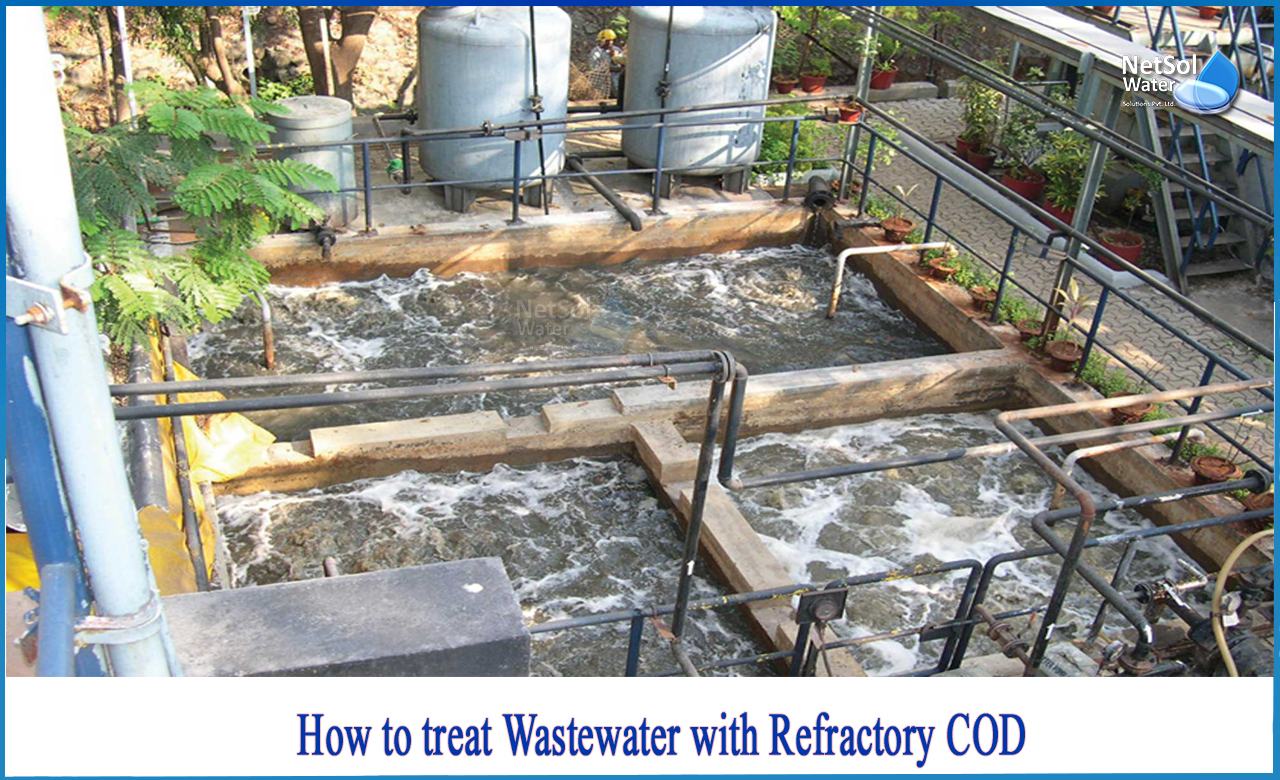How to treat wastewater with refractory COD?
We frequently encounter wastewater that is resistant to biological treatment due to the presence of specific organic components. Depending on the concentration, these chemicals have a specific level of toxicity. Effective removal of these organic contaminants in wastewater is a major issue that requires immediate attention since it primarily impacts natural water resources.
Refractory COD treatment
In general, a residual effluent concentration of refractory COD of 500-2500 mg/L limits the biological process of active sludge. Wet oxidation and thermal oxidation are the treatment procedures utilized to eliminate these pollutants because refractory COD limits biological treatment in effluents (incineration).
The following are the primary types of moist oxidation technologies:
1: Supercritical Oxidation of water (SCWO)
2: Wet air oxidation without catalysis (WAO)
Catalytic wet air oxidation (CWAO), with OHP as an advanced process_
WAO (non-catalytic wet air oxidation) is a well-known method in which oxidation takes place using dissolved oxygen from the air or O2-enriched gaseous streams. When the hydroxyl radical is formed and functions as the oxidizing agent, it is referred to as indirect oxidation; otherwise, it is referred to as direct oxidation.
Some ultimate products of various forms of oxidation of organic matter, such as carboxylic, acetic, formic, and oxalic acids, are not mineralizable but biodegradable, and typically account for 5-10% of total organic carbon (TOC). Thus, if the substances are not hazardous to sewage treatment systems, oxidation can be minimized.
1: What is Catalytic wet air oxidation (CWAO)?
When high mineralization is required, catalytic moist air oxidation (CWAO) is utilized. This is accomplished via catalysts that increase the rate of degradation of organic and inorganic compounds, as well as oxidizing chemicals like cyanides and ammonia using O2 as the oxidizing agent. Catalysts are metals that lower the needed operating conditions, such as pressure, temperature, and reaction time, considerably.
2: What is OHP?
It is a catalytic wet oxidation process that decomposes organic materials in an acid medium under moderate pressure and temperature conditions by reacting with hydrogen peroxide (H2O2). The process begins with the formation of the strongly oxidizing group [OH] at the operating temperature (around 120°C). Because the process is exothermic, the operating conditions must be maintained using a complicated, balanced system of sophisticated automated controls after it has started. Catalysts (typically copper and/or iron salts) are required for the system to function. The oxidation is carried out in an enameled metal reactor. A heat exchanger collects the energy released during the reaction and uses it to heat the effluent, ensuring proper working conditions.The yields of COD reduction from OHP can be quite high (> 90%). The demand for hydrogen peroxide determines its high operating costs.
What is Supercritical water oxidation (SCWO)?
The principal oxidant must travel through the gas-liquid interface in the aforementioned wet oxidation procedures. This creates constraints on reactor design, since a potential restriction on material transport speed must be considered. When the water's critical point (647.096 K and 22.064 MPa) is exceeded, the difference between phases vanishes, as do the high-valued transport coefficients. This implies it can degrade harmful organic compounds that are resistant to oxidation at temperatures ranging from 400 to 650oC and with short residence durations (30-90 sec).
What is Incineration?
Incineration is an energy-efficient process from the standpoint of consumption, because it uses COD as fuel; however, it must be at an adequate high concentration to avoid requiring the contribution of other fuels. The most serious disadvantage is that harmful gases (such as NOx, dioxins, and furans) are created, necessitating costly filtering and treatment systems for the released gases. Due to its great polluting potential and restricted availability, it is an extremely unpopular technology.
Conclusion
For the treatment of refractory COD in effluents that occur in different types of businesses, there are numerous approaches. The objective is to breakdown COD by oxidation or incineration; however, this has substantial implementation and operating costs, as well as requiring complicated facilities that, even when adequately regulated and instrumentalized, offer a safety concern.
Incineration appears to be the most economical and efficient approach, but it produces gases that are potentially more harmful than COD, necessitating the use of costly and reasonably efficient filters and purifying systems.
Make an appointment with Netsol Water for your free consultation or product-purchase related query now via phone at +919650608473 or contact via email at enquiry@netsolwater.com for a consultation on which methods of water treatment and recovery might be most effective for you.



